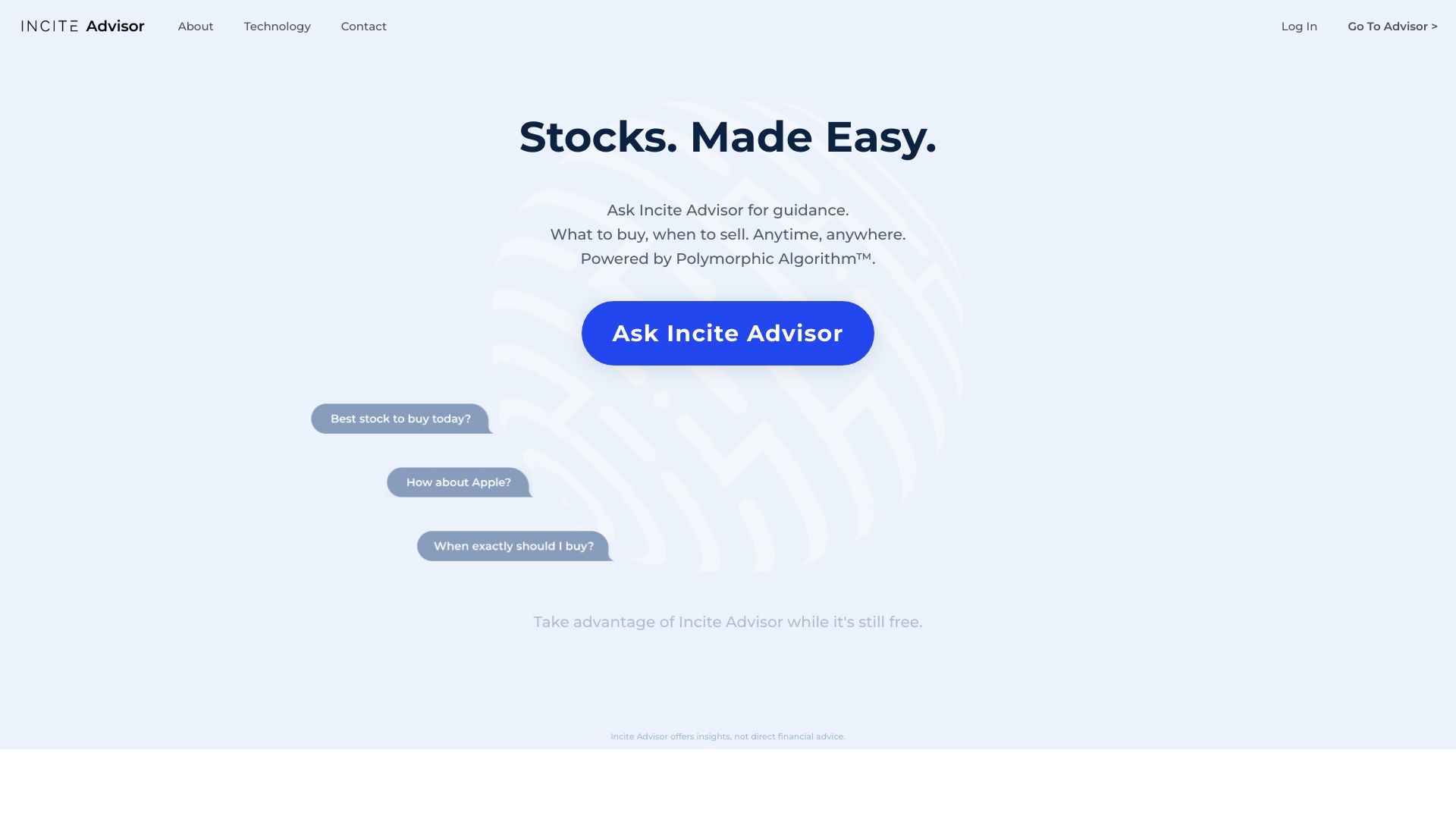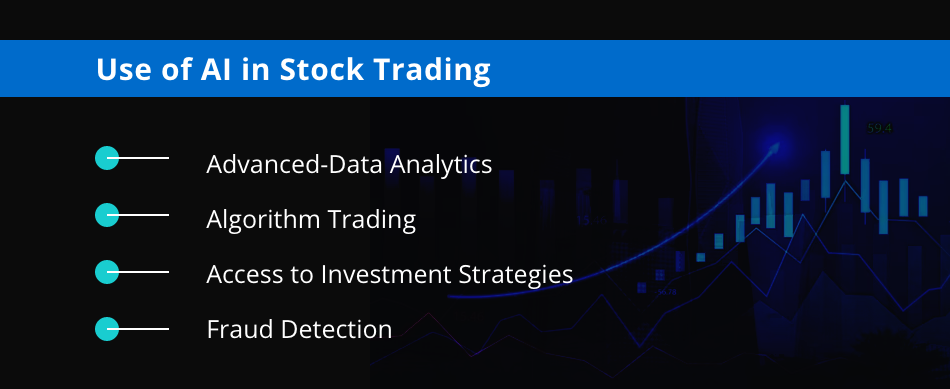20 Best Ideas For Choosing AI Stock Analysis Sites
20 Best Ideas For Choosing AI Stock Analysis Sites
Blog Article
Top 10 Suggestions To Evaluate Ai And Machine Learning Models For Ai Stock Predicting/Analyzing Platforms
It is crucial to evaluate the AI and Machine Learning (ML) models that are utilized by stock and trading prediction platforms. This will ensure that they provide accurate, reliable and practical information. Models that are not properly designed or overhyped can lead financial losses and inaccurate predictions. Here are 10 of the most useful ways to evaluate the AI/ML model used by these platforms.
1. The model's approach and purpose
Clear goal: Determine whether the model was designed for short-term trading, longer-term investing, sentiment analysis or risk management.
Algorithm transparency: See if the platform provides information on the kinds of algorithms used (e.g. regression, neural networks, decision trees and reinforcement learning).
Customizability: Assess whether the model is tailored to your specific trading strategy or your risk tolerance.
2. Review model performance by analyzing the metrics
Accuracy - Examine the model's prediction accuracy. But don't rely exclusively on this measurement. It may be inaccurate on financial markets.
Recall and precision. Evaluate whether the model accurately predicts price movements and minimizes false-positives.
Risk-adjusted Returns: Determine the model's predictions if they result in profitable trades taking risk into consideration (e.g. Sharpe or Sortino ratio).
3. Check the model with backtesting
Performance historical: Test the model with historical data to see how it would perform under previous market conditions.
Testing outside of sample: Test the model with data it wasn't trained on to prevent overfitting.
Scenario Analysis: Review the model's performance in different market conditions.
4. Be sure to check for any overfitting
Overfitting: Be aware of models that perform well with training data, but don't perform as well with data that has not been observed.
Regularization techniques: Verify whether the platform is using techniques such as L1/L2 regularization or dropout to prevent overfitting.
Cross-validation. The platform must perform cross validation to determine the model's generalizability.
5. Assess Feature Engineering
Relevant features - Make sure that the model incorporates important features such as volume, price or other technical indicators. Also, check sentiment data and macroeconomic factors.
Selection of features: You must be sure that the platform is choosing features with statistical importance and avoid redundant or unneeded data.
Dynamic feature updates: Check whether the model is able to adapt to changes in market conditions or new features over time.
6. Evaluate Model Explainability
Model Interpretability: The model needs to be able to provide clear explanations for its predictions.
Black-box platforms: Beware of platforms that utilize too complicated models (e.g. neural networks that are deep) without explainingability tools.
The platform should provide user-friendly information: Make sure the platform provides actionable information that are presented in a manner that traders will understand.
7. Examine the adaptability of your model
Market conditions change - Check that the model is modified to reflect changing market conditions.
Continuous learning: Check whether the platform is continuously updating the model to include new information. This could improve the performance.
Feedback loops - Make sure that the platform integrates real-world feedback as well as user feedback to improve the system.
8. Be sure to look for Bias Fairness, Fairness and Unfairness
Data bias: Ensure that the training data is accurate to the market and free from biases (e.g. the overrepresentation of certain segments or timeframes).
Model bias: Ensure that the platform actively monitors model biases and mitigates it.
Fairness. Make sure your model doesn't unfairly favor certain industries, stocks or trading techniques.
9. Evaluate the effectiveness of Computational
Speed: Determine if the model generates predictions in real time, or with a minimum of delay. This is particularly important for high-frequency traders.
Scalability Check the platform's capability to handle large amounts of data and users simultaneously without performance loss.
Utilization of resources: Determine if the model has been optimized for the use of computational resources efficiently (e.g. the GPU/TPU utilization).
10. Transparency in Review and Accountability
Documentation of the model. Ensure you have detailed documents of the model's structure.
Third-party auditors: Check whether the model has undergone an audit by an independent party or has been validated by a third-party.
Error handling: Determine that the platform has mechanisms to detect and rectify model errors or failures.
Bonus Tips
Case studies and user reviews Utilize feedback from users and case study to evaluate the real-world performance of the model.
Trial period: Test the model for free to see how accurate it is and how simple it is utilize.
Customer support: Make sure that the platform offers robust support to address technical or model-related issues.
Use these guidelines to evaluate AI and predictive models based on ML and ensure they are trustworthy and transparent, as well as aligned with trading goals. Have a look at the recommended best ai for trading advice for blog advice including stock ai, ai chart analysis, chart ai trading assistant, ai investing, ai for stock predictions, market ai, ai investing, market ai, ai for trading, chatgpt copyright and more.
Top 10 Tips To Assess The Regulatory Compliance Of AI stock Forecasting/Analyzing Trading Platforms
The regulatory compliance is a crucial aspect to consider when evaluating AI trading platforms for stock prediction or analysis. Compliance is important as it guarantees that the platform complies with the laws and regulations. It also safeguards users' data. Here are 10 top suggestions for evaluating the regulatory compliance of these platforms:
1. Verify registration and licensing
Regulators: Confirm that the website is registered and licensed by the relevant financial regulatory authority (e.g. SEC, FCA, ASIC, etc.) in your nation.
Broker partnerships: Make sure that brokers that are a part of the platform are also properly licensed.
Public Records: Go to the website of your regulatory body for information on registration status, past violations and other relevant information.
2. Take Data Privacy Measures Compliance
GDPR - If your platform operates in the EU and/or serves users from the EU make sure that it complies with GDPR.
CCPA - California Consumer Privacy Act: Verify compliance for California users.
Data handling policies: Read the platform's policy on privacy and data security to ensure that it clearly outlines how data from users are collected, stored and shared.
3. Evaluation of Anti-Money Laundering Measures
AML Policies: Ensure that the platform you use has AML policies that are strong to stop and detect money laundering.
KYC Procedures: Determine if there are procedures on the platform to confirm users' identities.
Transaction monitoring: Determine whether the platform can monitor transactions and reporting any suspicious transactions to relevant authorities.
4. Verify that you are in compliance with Trading Regulations
Market manipulation: Make sure that the platform has measures to stop market manipulation for example, spoofing or washing trading.
Types of orders. Verify that the platform is in compliance with all regulations regarding order type (e.g. there's no illegal stop loss hunting).
Best execution: Ensure that the platform adheres to the most efficient execution procedures to ensure that trades are executed for the best price.
5. Review Cybersecurity Compliance
Data encryption. Your platform should use encryption to protect user data both in transit and at rest.
Incident response. Verify that there is a clearly defined incident response strategy on the platform for cyberattacks and data breaches.
Certifications: Check if the platform has been certified to be secure (e.g. ISO 27001, SOC 2)
6. Transparency and disclosure A Review
Fee disclosure: Make sure the platform discloses all charges, including any hidden or extra fees.
Risk disclosure: Make sure the platform provides clear risks and disclosures. This is particularly important for trading strategies that have high leverage or risk.
Performance reporting: Make sure that the platform offers transparent and accurate reports regarding its AI models.
7. Verify the compliance to International Regulations
Transborder trade: If you want to trade internationally make sure the platform is compliant in all jurisdictions.
Tax reporting - Verify the platform's tools and reports that assist users in complying with tax laws.
Check for compliance with sanctions. Verify that the platform follows sanctions to the sanctions and will not allow transactions or trading with countries or entities that are banned.
8. Assess Record-Keeping & Audit Trails
Transaction records: Ensure that the platform maintains detailed records of all transactions to ensure audit and regulatory compliance.
User activity logs - Verify that the platform records every user's activity such as logins to the platform, trades that are made, and any changes to your account settings.
Audit readiness: Check if the platform has the necessary documentation and logs in the case an audit by a regulatory agency.
9. Verify compliance with AI-specific Regulations
Algorithmic rules for trading: If the platform supports algorithmic trading, it must comply with European regulations like MiFID II and U.S. Reg SCI.
Fairness and bias: Determine whether the platform is able to monitor and corrects biases within its AI models to ensure ethical and fair trading.
Explainability - Make sure that the platform is able to clearly and concisely explain about AI-driven predictions, decisions, etc. in accordance with certain rules.
Review User Feedback & Regulatory History
User reviews: Check out the opinions of other users and then compare it with the platform's compliance with norms of the industry.
History of regulation: Determine whether the platform has a history of regulatory violations such as fines, penalties, or sanctions.
Third-party auditors: Make sure that the platform is audited regularly by third parties to ensure that it adheres to rules and regulations.
Bonus Tips
Legal consultation: Speak with a lawyer to ensure that the platform meets the relevant laws.
Free trial period: You are able to avail a demo or a free trial to evaluate the features that ensure compliance of the platform as well as its documentation.
Customer support - Check that the platform is able to assist with any compliance related issues or concerns.
If you follow these guidelines, you can effectively assess the regulatory compliance of AI platforms for stock prediction and analysis making sure you select a platform that operates within legal frameworks and protects your interests. Compliance does not just help lower legal risks, but also increases confidence with the platform. Have a look at the recommended stocks ai examples for site examples including ai in stock market, AI stock price prediction, can ai predict stock market, trading ai tool, chart analysis ai, stocks ai, investing with ai, how to use ai for stock trading, free AI stock picker, stock predictor and more.